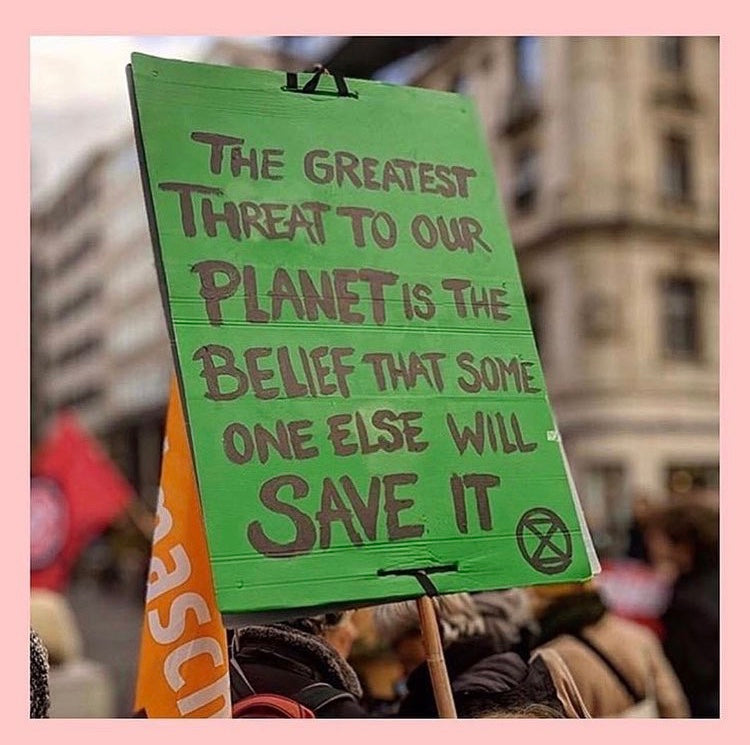Although there’s been political distraction it’s hard to deny that there is a small shift happening, a pulse that’s beating a little louder. A rallying cry has surfaced and thousands are flocking to its call.
We’ve been building up to it for months, a slow drum beat. Report after report signalled a worrying future. For many, the catalyst came in the form of a movement: Extinction Rebellion.
We talked about the IPCC report when it came out in October last year. In brief, the most conservative of reports showed that a temperature increase of 1.5 degrees was BAD and that 2 degrees was REALLY BAD. We’re currently on path for 3 degrees of warming 🚨🚨🚨. The science world said it loud and clear: turn this ship around. Do it now.
The alarm was sounded. And although political leaders and climate change negotiators professed words of intention, a group erupted to make sure the siren was heard.
People, ordinary people, like you and me are making a fuss. Causing a ruckus, demanding to be heard. In the cities but also in small town suburbia and villages. Yes the lifelong activists and the stereotype hippies are there but also there are grandmothers, lawyers and teenagers joining the ranks, adding their voices.
Sometimes blocking bridges or roads, hosting ‘block parties’, and ‘die-ins’. They gather in church halls and local community centres, sharing knowledge and information. What is non-violent direct action? What are our rights? They seek solace and refuge, realising they are not facing this alone.
They shout united: Declare a climate emergency.
Since it launched in October 2018, Extinction Rebellion has grown exponentially, more than a million people are engaged across 65 countries. Started initially in the UK there are multiple coordinating groups in Canada, USA, Germany, France, Australia and New Zealand. All of the activity is gearing up to April 15th, the start of International Rebellion. A concentrated effort to force governments to listen and demand they tell the truth about the severity and immediacy of climate change.
In the words of Greta Thunberg “we will not solve this crisis while we do not call it a crisis.”
Tipping Points
Research looking at successful social movements in the past (Civil Rights, Votes for Women, independence movements) shows there is a tipping point: 3.5% of the population is needed onside to bring about real social change. It needs to be non-violent but importantly, it needs to be disruptive. It needs to interfere with people’s daily lives, grab the headlines, obstruct the economy. This is how you get people to listen, the theory goes. One march, on one day, will not be enough.
Extinction Rebellion has been supporting the Youth Strikes for Climate that we featured in our last post.
An element that makes Extinction Rebellion stand out from other eco-movements is a focus on ‘regenerative culture’ and inviting in the difficult emotions that accepting the crisis evokes in people. They also don’t presume to have the answers, instead calling for “Citizens’ Assemblies” to determine the solutions.
If you haven’t heard of Extinction Rebellion yet, we invite you to check them out. They might not be your cup of tea but they are pushing to keep climate change up front and centre. Whether you decide to join the rebellion or not, let’s talk about climate change with the urgency it requires. And let’s have fun while doing it.
#RebelForLife








